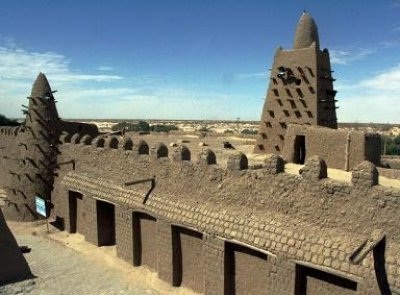by Alex Thurston
Mali’s civil war continues. The Tuareg-led separatist group the National Movement for the Liberation of the Azawad (MNLA), whose rebellion against the government began on January 17, wants independence for the northern regions of Kidal, Gao, and Timbuktu (the “Azawad”). But the Islamist movement Ansar al Din (Arabic: “Defenders of the Faith”), which appears to have the upper hand in northern Mali, rejects independence. Instead, as they reiterated this week to journalists and West African mediators, they want to impose their version of shari’a (Islamic law) across all of Mali. With an alliance between the two groups giving way to reported clashes, and with the government still largely pre-occupied with its own political troubles in the south (namely, sorting out who rules following the March 22 coup), the Islamist vision appears ascendant in the north.
The MNLA and Ansar al Din have dominated the headlines about Mali this spring and summer. But how have other Malian Muslims reacted to the crisis in the north, and to the partial “Islamization” of the conflict by Ansar al Din? In this post I look at one national Malian Muslim organization, the Haut Conseil Islamique du Mali (HCIM, “High Islamic Council of Mali”), that has played a role in negotiating with rebels in the north.
After Mali transitioned to multiparty civilian democracy in 1991-1992, new Islamic associations and media outlets proliferated in the country as part of a broader growth of civil society. Louis Brenner and Benjamin Soares (.pdf) have detailed this process. Soares writes (p. 85):
There are many dozens of new Islamic associations in Mali, most of which are not only urban based, but usually restricted to Bamako and other urban centres in the country. They include Muslim youth, women’s, and reformist Muslim associations, as well as Islamic associations promoting development. If some are Islamic NGOs with complex transnational connections, many more are trying to raise funds for the construction of mosques, schools and development projects from local wealthy donors or overseas, often without much success. Most of the founders, leaders and activists in these Islamic associations are madrasa graduates or those with a more ‘traditional’ Islamic education. Many are Muslim intellectuals, who are members of a new highly educated postcolonial Muslim elite with complex transnational ties and sometimes affiliations.
The HCIM, founded in 2002, responded to this context. The organization acts as a liaison (French, p. 2) between the government and other Islamic associations. This has not meant that the HCIM always takes the government line on issues; quite the contrary. For example, the HCIM was a prime mover behind protests in 2009 against a proposed family code, one that various Muslim groups felt would undermine religious life and values in Mali. The HCIM’s president, Sheikh Mahamoud Dicko, favors a greater role for Islam in Malian political and public life. The country’s Muslims, he says (French), should not be treated as “a majority that doesn’t count.” Mali is, according to the US State Department, 90% Muslim. Its political system, however, has been deeply marked by the idea of laicite. This conception of secularism, which Mali inherited from its former colonial power France, strictly separates religion and the state. Dicko, in other words, calls for a rethinking of Mali’s political culture.
During the current crisis, the HCIM has acted as an interlocutor between the government and the rebels. The HCIM retains branches in key northern cities. In April, it helped secure the release of 160 captured government soldiers (French).
Dicko has consistently favored dialogue, which makes his stance on shari’a (French) particularly interesting:
The application of shari’a…cannot take place at the point of a gun. No one can come to impose shari’a on us. We must let the people! No one imposed Islam on us. So, we do not need someone to come impose shari’a on us. It is their point of view, it is their vision, just as others, too, have their point of view. Everyone together must discuss what is possible and what is not possible.
Dicko’s words, here and elsewhere, assert a common bond with Ansar al Din as Malians and Muslims. At the same time, however, Dicko relativizes Ansar al Din’s point of view as just one among many.
Could this attitude provide enough common ground for the dialogue the HCIM desires? Perhaps it could, especially if Ansar al Din’s members still consider themselves part of a unified Mali. On the other hand, Ansar al Din’s vision is itself partly based on an exclusive vision of what it means to be Muslim. The HCIM may have an open channel to Ansar al Din, but the latter would probably have to acknowledge the plural character of Muslim viewpoints in Mali before negotiations and dialogue could bring an end to the violence.
In very different ways, the HCIM and Ansar al Din both want a more deeply Islamic society in Mali, as do certain other Muslim groups in the country. Pursuing Islamization while managing plurality is a core challenge for these groups. The outcome of the ongoing battle for northern Mali will shape that debate, but the debate will likely continue, in various forms, long after the battle is over.
Alex Thurston is a Ph.D. candidate in Religious Studies at Northwestern University. For 2011-2012, he is conducting dissertation fieldwork in Northern Nigeria. Alex has written for the Christian Science Monitor, Foreign Policy, and The Guardian. He blogs at http://sahelblog.wordpress.com, and is a regular contributor to The Revealer.
With support from the Henry R. Luce Initiative on Religion and International Affairs.

